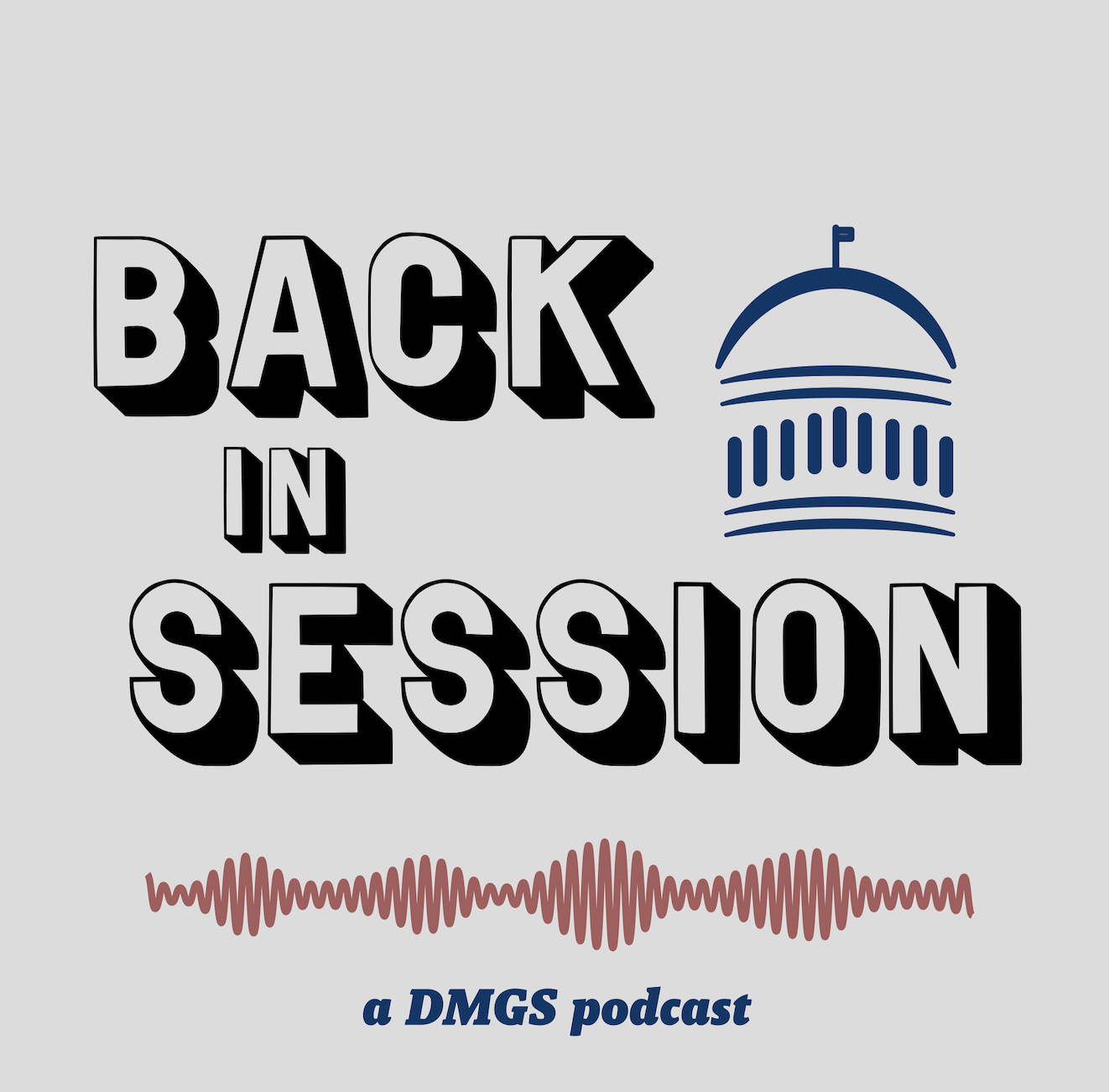It’s difficult to find an area of the country that has been untouched by the scourge of opioids. According to the Center for Disease Control, opioid-related deaths quadrupled from 1999 to 2015. Several states have suffered disproportionately—West Virginia, Ohio, Kentucky, Rhode Island, and New Hampshire have the highest per-capita overdose rates in the country. With more than 33,000 opioid-related deaths in 2015, the epidemic has forced itself in into the national spotlight.
Both Democratic and Republican lawmakers at the federal and state level have presented a host of tools to help communities fight opioids. Whether it’s tightened drug enforcement, harsh prison sentences, or better access to treatment, officials have introduced comprehensive policies to help stem a complex problem. While many experts believe in a multi-faceted policy, one CDC statistic starkly illustrates the epidemics core problem: as opioid-related deaths have quadrupled over the past 15 years, the rates for prescription painkillers have tripled. Although prescription rates for painkillers peaked in 2010 before decreasing by 18 percent, there were more than 236 million opioid prescriptions written in 2015 in the United States—that’s about one bottle of opioids for every American adult. Moreover, as communities and healthcare providers increase oversight, addicts have turned to heroin or fentanyl, a cheap and dangerous synthetic opioid.
In March 2016, the CDC released guidelines for prescribing opioids, which said opioid treatment for non-traumatic, nonsurgical acute pain is rarely needed for more than seven days. The guidelines include a host of recommendations; The guidelines include 12 recommendations that are broken into three main categories:
- determining when to continue or initiate opioid use for patients suffering from chronic pain;
- determining opioid selection, dosage, duration, follow-up, and discontinuation;
- assessing the risk and addressing harms of opioid use.
The recommendation calls for doctors to check prescription tracking systems to make sure patients weren’t receiving medication anywhere else. A few months after the guidelines were released, West Virginia—which had the highest rate of opioid overdoses with 41.5 per 100,000 people—announced the state would begin implementing some of these policies.
“These new guidelines will give physicians and patients the facts they need to make more informed decisions about treatment,” West Virginia Governor Earl Ray Tomblin said in a statement. “With more than 600 opiate-related overdose deaths in West Virginia last year, we must continue making every positive change we can to break the cycle of addiction.”
Federal Action
Shortly after his inauguration, President Donald Trump created the President’s Commission on Combating Drug Addiction and the Opioid Crisis. Trump tapped New Jersey Governor Chris Christie (R) to serve as chair of the panel. Other commission members include Massachusetts Gov. Charlie Baker (R), Gov. Roy Cooper of North Carolina (D), former Rhode Island Rep. Patrick Kennedy and Dr. Berta Madras, a professor of psychobiology at Harvard Medical School. The commission aims to study the federal government’s response and offer recommendations to stem the opioid epidemic. On August 3rd, 2017, the Commission published their interim report. The final report is expected later in the Fall of 2017. Among the recommendations, is a proposal to waive the prohibition on using Medicaid funds to pay for residential substance abuse treatment.
In December 2016, then President Barack Obama signed the 21stCentury Cures Act. The bipartisan legislation provides $6.3 billion to the National Institutes of Health, with $1 billion in grants to help states fight the opioid epidemic for two years. Eighteen months prior, Obama signed the Comprehensive Addiction and Recovery Act, which authorizes $181 million in treatment and recovery services, as well as prevention services. Furthermore, the Department of Health and Human Services created the Substance Abuse Prevention and Treatment Block Grants. The program provided $1.85 billion in funding for state alcohol and drug authorities in 2016, with $371 million allocated for primary prevention services in 2017.
New York Senator Kirsten Gillibrand (D) introduced the Opioid Addiction Prevention Act of 2017 in early April. Co-sponsored by Arizona Senator John McCain (R), the proposed legislation gleans from the CDC’s guidelines, requiring medical professionals to adhere to a policy that limits opioid prescriptions for acute pain that does not exceed a seven-day supply. The law does not impact patients using opioids for chronic pain, cancer care, hospice or end-of-life care.
“Too many lives have been destroyed, too many families have been torn apart, and too many communities all over New York and suffering because of this tragic epidemic,” Gillibrand said in a release. “The Opioid Addiction Prevention Act would target one of the root causes of the opioid addiction crisis, which is the over-prescription of these powerful and addictive drugs for acute pain. I am urging my colleagues in Congress to pass this measure to help curb the growing opioid crisis.”
The debate over Obamacare repeal and Medicaid funding has further complicated opioid prevention measures. Currently, Medicaid expansion under the Affordable Care Act has allowed hard-hit states like West Virginia, Kentucky, and Ohio to provide expanded treatment services. According to the Kaiser Family Foundation, Medicaid covers 3 in 10 people addicted to opioids. Medicaid expansion has helped decrease the number of uninsured hospital visits due to behavioral health from 20 percent to 5 percent from 2013-2015. To help curb treatment gaps created by an Obamacare repeal, Republican Senators have a proposed $45 billion over 10 years for substance abuse treatment as part of their healthcare replacement plan.
Democratic and Republican Senators from opioid-plagued states have said the funding falls well short of what’s needed.
“I have serious concerns about how we continue to provide affordable care to those who have benefited from West Virginia’s decision to expand Medicaid, especially in light of the growing opioid crisis,” said West Virginia Senator Shelley Moore Capito (R) in a statement on July 18. “All of the Senate health care discussion drafts have failed to address these concerns adequately.
State Action
In lieu of federal funding, 47 state legislatures considered 536 bills in 2016 related to drug abuse prevention, according to the National Conference of State Legislators. Many of these proposals deal with comprehensive programs that establish prescription drug monitoring programs, tighter pain clinic regulations and legislation that ensures first responders have access to lifesaving drugs for overdosed patients. While many opioid experts believe in comprehensive efforts, they believe limiting prescriptions can have a significant impact on the epidemic. A 2009 study by the National Institute of Health revealed 86 percent of drug users had used prescription pills nonmedical before moving to heroin. These addicts said they primarily received their pills from prescriptions written for them, or for friends and family. As a result, states have targeted prescription guidelines.
We have compiled a list of key states that have introduced prescription painkiller reform in 2016 and 2017 (note that this list is not exhaustive):
States Introducing or Approving Opioid Legislation in 2017
Alaska
Both the Alaska State Senate and House approved legislation restricting opioid prescriptions in June. The legislation, which was proposed by Governor Bill Walker (I), limits first-time opioid prescriptions to a week with certain exceptions. Under current law, doctors can provide up to a month of prescription painkillers. The new law also affects dentists, veterinarians, and eye doctors. Healthcare providers must also receive pain management and opioid abuse education while monitoring prescription rates. Since 2006 opioid overdose rates have quadrupled in Alaska. Ninety-five Alaskans died of opioid overdoses in 2016 from heroin and prescriptions. Studies also revealed a majority of Alaska’s heroin users became addicted to prescription opioids before moving on to heroin.
Connecticut
The State Legislature approved a comprehensive piece of opioid legislation with a unanimous vote which Governor Daniel P. Malloy (D) signed on June 30th. The bill increases prescription oversight, expands data sharing between state agencies, limits maximum prescription for minors from seven to five days, and requires individual and group health insurers to cover necessary treatments. The bill also requires prescribers to inform patients about the dangers of opioids and mandates electronic prescriptions instead of written. “Opioid addiction and prescription drug abuse is a disease that is impacting nearly every community and people of every background,” Governor Malloy said after signing. “It is a complex crisis that does not have one root cause, nor does it have a simple solution, but we need to do everything in our power to treat and prevent it.”
Florida
Opioids, including heroin and synthetic opioids like fentanyl, killed an average of 14 people a day in Florida during the first half of 2016. The Sunshine State has experienced a long history of opioid issues with an aging population and a higher number of pain management clinics than most states. While Florida has worked to close unregulated pain clinics, many addicts have turned to heroin and fentanyl, increasing overdose rates.
In May Governor Rick Scott (R) declared a state of emergency because of the opioid crisis. He then issued orders for mandatory minimums on fentanyl; 4 grams will receive a minimum of three years, 14 grams will receive 15 years and 28 grams will net 25 years. The bill also allows prosecutors to charge fentanyl dealers with homicide if they sell a fatal dose of the drug.
Indiana
Governor Eric Holcomb (R) signed legislation in June limiting opioid prescriptions to adults and children to seven days. The law also expands treatment access for pregnant women and mothers, expands treatment facilities throughout the state, creates a treatment center for non-violent drug offenders and removes barriers for starting a needle-sharing program.
Indiana has the 17th highest rate of overdose deaths of any state but is among the hardest places to find treatment, according to the CDC.
Kentucky
A law passed by the Republican-majority prohibits prescribing patients with acute pain for controlled substances for no more than three days. The law, which was implemented in June, exempts prescribers giving patients a larger supply to treat chronic or cancer-related pain. While the three-day limit is the toughest in the nation, the Kentucky Board of Licensure must develop regulations to implement the rule. The new law includes harsher penalties for heroin and fentanyl, while also broadening the definition of synthetic opioids.
Louisiana
Governor John Bel Edwards (D) signed three bills in June to help fight Louisiana’s increasingly deadly opioid epidemic. One of the laws implements a seven-day limit on for first-time prescriptions for acute pain. Another bill requires prescribers to check a database before prescribing an opioid to help prevent against doctor shopping. Another piece of legislation creates a 13-member advisory council on heroin and opioid prevention to help create policy recommendations for the state. According to data from the CDC and DrugAbuse.gov, the Bayou State had the sixth highest opioid prescription rate.
Michigan
Governor Rick Snyder (R) has spearheaded an effort to curb opioid prescription abuse. In April, the Department of Licensing and Regulatory Affairs announced a new prescription monitoring system that allows prescribers to see which schedule 2-5 substances have been prescribed to patients. Two months later the assembly approved a package of bills recommended by Snyder’s opioid task force. One of those proposals allows Medicaid to pay for treatment and detox services. Another bill allows pharmacists to refuse opioid prescriptions if they believe the patient forged or received an improper prescription.
New Hampshire
From 2013 to 2015, the number of overdoses in New Hampshire doubled from 200 to 400. In January, the New Hampshire Board of Medicine and the Board of Nursing adopted several regulations to stem the state’s opioid epidemic. One of those regulations includes a risk assessment before doctors prescribe an opioid. Doctors can now check a database in the state’s prescription drug monitoring program to ensure patients are seeking drugs from multiple doctors. Furthermore, opioid prescriptions in emergency rooms, urgency care settings, or walk-in clinics cannot exceed seven days.
New Jersey
The Garden State established one of the most stringent pieces of opioid legislation in 2017, thus far. Governor Chris Christie (R)signed a law in February that limits opioid prescriptions from 30 days to five days and requires insurance companies to accept opiate addicts without delay. The Medical Society of New Jersey strongly opposed the law. Following Christie’s signature, the organization released a statement. “Unfortunately, statutory medication limits decrease the quality of care and life for pain patients. The Medical Society of New Jersey opposes such intrusions into the practice of medicine, especially if they do not take into account individual patient circumstances, like medication tolerance or access to insurance, transportation or alternative treatments.” Nonetheless, the bill received 64-1 support in the state assembly.
New Mexico
A New Mexico law implemented on January 1 requires health care providers to screen new and extended opioid prescriptions against a statewide electronic database. In April, New Mexico became the first state to require all local and state law enforcement to provide officers with opioid antidote kits to help curb overdoses. New Mexico also became the first state to dispense naloxone without a prescription, while also requiring all licensed clinicians to undergo extra training for prescribing painkillers. New Mexico had the second highest overdose death rate in the nation in 2014, but recent CDC statistics show it dropped to 44th.
New York
In June 2016, Governor Andrew Cuomo (D) signed comprehensive legislation limiting opioid prescriptions and increasing access to treatment services. Cuomo’s legislation limits opioid prescriptions from 30 to seven days while adding 270 beds for treatment and 2,335 program slots for substance abuse. A year later, Cuomo signed another piece of opioid legislation that invests more than $200 million to support prevention, treatment and recovery programs throughout the state. The funding requires mandatory prescriber education. Nearly three-quarters of the funding is earmarked for community-based providers. “This comprehensive investment addresses each component of heroin and opioid addiction – prevention, treatment, and recovery – to help individuals and families break this cycle of misery, save lives and create a stronger, healthier state for all,” Cuomo said in a release.
Ohio
Governor John Kasich (R) announced new rules for prescribing opioids in March 2017. With the approval of the Ohio Attorney General, Kasich’s order says doctors, dentists, and nurses can’t prescribe more than seven days of narcotic painkillers and only five days for minors. The law comes after a series of restrictions on pain pills began in 2012. Those restrictions cut down on pills prescribed in Ohio by 20 percent, from 2012 to 2016. Policymakers believe the new law will reduce the number of pain pills dispensed by 109 million a year.
Rhode Island
Governor Gina Raimondo (D) gave authorities greater enforcement ability in the fight against opioids after signing three bills in June. The new legislation allows law enforcement to access prescription painkiller databases, requires doctors and nurses to discuss the risk of addiction when writing opioid prescriptions, and expands the type of pharmaceuticals prescribed electronically. The law comes a year after Raimondo approved a bill to limit initial opioid prescriptions for adults to 30 milligrams equivalents per day for a maximum of 20 doses. The law applies to acute pain from injuries and surgeries but does not apply to chronic pain. The law also requires pharmacies to transmit opioid prescriptions to a state database within one business day of dispensing.
Virginia
The Commonwealth approved four bills as part of a comprehensive plan to fight the state’s opioid epidemic. Among those bills includes a regulation mandating electronic prescriptions to pharmacies by 2020. The law also stipulates a workgroup must study how best to implement this policy. Governor Terry McAuliffe (D) also signed laws that allow community organizations to dispense naloxone. The law also encourages needle exchange programs and a plan to help families suffering from opioid addiction access help from local organizations.
(Several other state legislatures, including Georgia, Washington, Oregon, North Carolina, and Hawaii have introduced comprehensive legislation to help curb the opioid crisis in 2017.)
States Passing Notable Legislation in 2016
Arizona
Governor Doug Ducey (R) issued an executive order in October 2016 prohibiting initial opioid prescriptions from lasting more than seven days. The order limits all opioid prescriptions for children, but only affects adults with insurance provided by the state or Medicaid. The order does exempt those afflicted with cancer, chronic disease, and traumatic injury. “In 2015, 401 people in Arizona—more than one a day—died from prescription opioid overdoses. And in 2013 there were enough prescription pain medications dispensed to medicate every adult in Arizona around the clock for two weeks,” Ducey said in a statement following his signing of the executive order.” He added, “The large prescriptions of highly addictive substances are incredibly dangerous, and we have to take action now. By limiting the fills of prescriptions for all state health plans, we hope to encourage private companies to consider similar action.”
Massachusetts
In 2014, Massachusetts had the highest rate of emergency room visits due to opioid-related issues. According to information from the Healthcare Cost and Utilization project, 450.2 per 100,000 people visited the hospital in the state, while the national average hovered around 177.7. A law signed by Governor Charlie Baker (R) in March 2016 limits initial prescriptions for opioids to a seven-day supply, but those receiving treatment for cancer or chronic pain remain exempt. The law says a mental health professional must provide a substance abuse evaluation to anyone entering an emergency room from an opioid overdose while requiring doctors to check a statewide database each time they make a prescription. It also allows schools to verbally screen students to help identify those at risk of drug addiction.
Maine
The CDC reported in 2014 that Maine had the highest prescription rate for long-term extended-release opioids, the most abused prescription opioids according to experts. In 2016, Republican Governor Paul LePage unveiled a comprehensive reform to opioid prescriptions. The law limits most patients to 100 milligrams a day while exempting those with long-term pain or cancer diagnosis. Another aspect of the law limits opioid painkiller prescriptions to seven days for acute pain and 30 days for chronic pain. A year after its implementation, opioid prescription rates fell by 30 percent in seven of Maine’s eight counties. However, skeptics of new law claim that it could force addicts into heroin.
Latest News
Photo credit: iStock.com/naturalbox The debate over raw milk legislation has intensified in 2024, with several states introducing or passing bills that address the sale and distribution of unpasteurized dairy products. Raw milk has not undergone [...]
In this episode of the Back in Session podcast, hosts Ryan Stevens and Ryan DeMara sit down with Terra McClelland, President of the State Government Affairs Council (SGAC) and Vice President of Government and External [...]
Photo credit: iStock.com/Vladyslav Horoshevych Vaping has become increasingly popular among school-age Americans. A recent study found that 2.5 million U.S. youth vape. Relative to other nicotine products, young adults commonly prefer battery-operated devices like e-cigarettes, [...]
Photo credit: iStock.com/sittithat tangwitthayaphum State legislators have grappled with policies surrounding physicians offering life-ending care to terminally ill patients for many years. Life-ending care enables medical providers to go further than just making patients who [...]






Stay In Touch